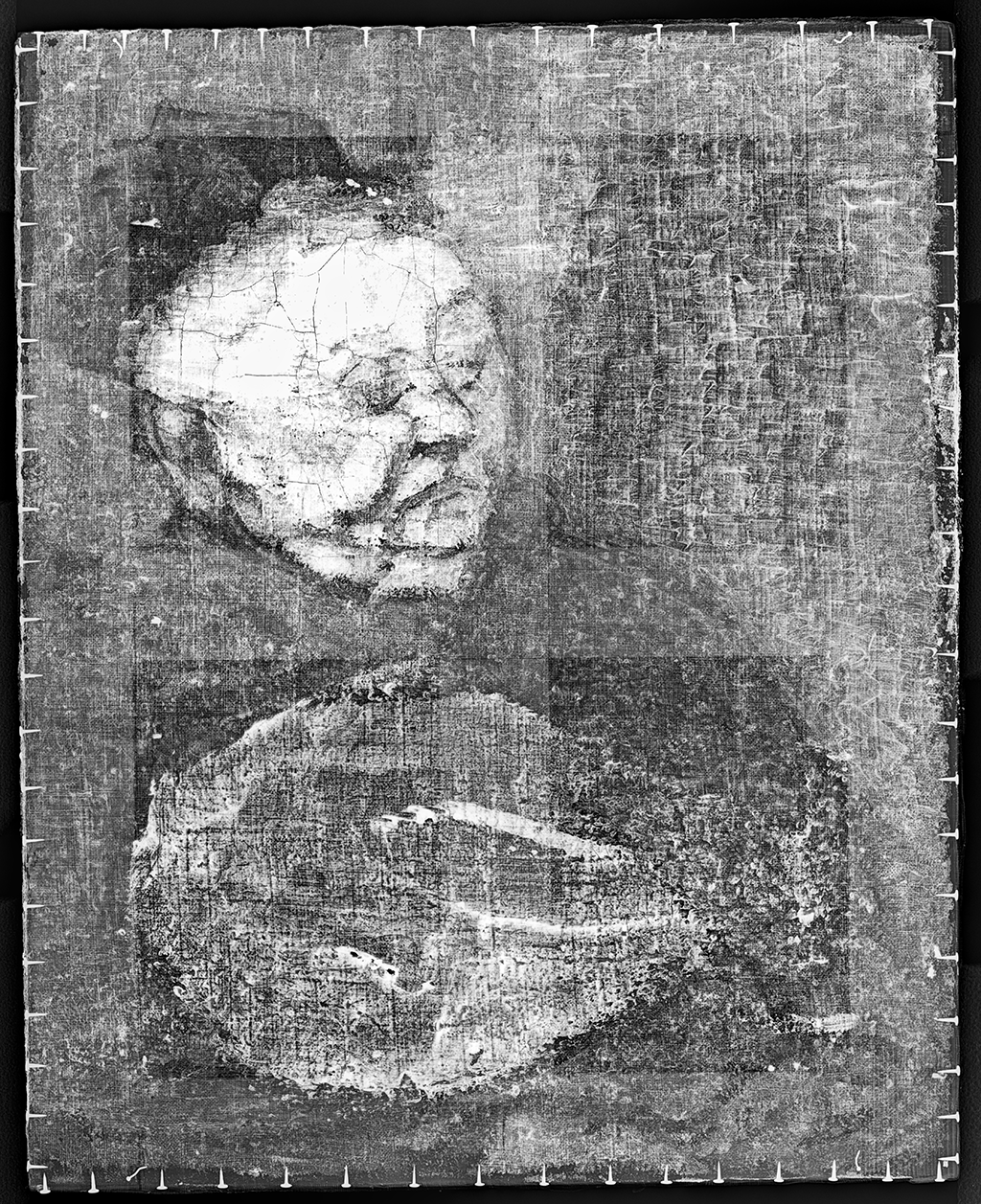![]()
Émile Bernard, The Artist's Grandmother, 1887
| Artist | Émile Bernard, French, 1868–1941 |
| Title | The Artist’s Grandmother |
| Object Date | 1887 |
| Alternate and Variant Titles | La Grand-mère de l’Artiste |
| Medium | Oil on canvas |
| Dimensions (Unframed) | 21 3/4 × 17 3/8 in. (55.3 × 44.2 cm) |
| Signature | Signed lower left: Emile Bernard |
| Credit Line | The Nelson-Atkins Museum of Art. Purchase: Thomas L. Beckett Fund in memory of Samuel F. Beckett and Ethel K. Beckett, 2017.19 |
Catalogue Entry
Citation
Chicago:
Aimee Marcereau DeGalan, “Émile Bernard, The Artist’s Grandmother, 1887,” catalogue entry in French Paintings and Pastels, 1600–1945: The Collections of the Nelson-Atkins Museum of Art, ed. Aimee Marcereau DeGalan (Kansas City: The Nelson-Atkins Museum of Art, 2023), https://doi.org/10.37764/78973.5.702.5407.
MLA:
Marcereau DeGalan, Aimee. “Émile Bernard, The Artist’s Grandmother, 1887,” catalogue entry. French Paintings and Pastels, 1600–1945: The Collections of The Nelson-Atkins Museum of Art, edited by Aimee Marcereau DeGalan, Nelson-Atkins Museum of Art, 2023. doi: 10.37764/78973.5.702.5407.
To My Grandmother
LOVE of good lulled me with your smile
And I lived by you in my second childhood.
Oh! Our life together! Very alone, and far from the words
Of slander and resentment, and far from evil!
This rocking in the cadence of your soul,
And welfare to ignore the infamous glory!
Holy example, they compare me to a hermit
Who watches tenderly the pot boil;
And we are blamed for cherishing loneliness . . .
Who knows what it is to love such calm and such study?1Émile Bernard, “A Ma Grand’Mère,” in Le Voyage de l’Être: Poèmes d’Évolution . . . Suivi De Paysages Et Du Livre d’Hommages Depuis 1886 Jusqu’à 1898 (Cairo: Imprimerie Centrale Moussa Roditi), 346. All translations are by Aimee Marcereau DeGalan, unless otherwise noted.
French painter, poet, and author Émile Bernard shared a profound and affectionate relationship with his maternal grandmother, Sophie Albertine Bodin-Lallemant (1813–95). This bond is evident in the poem he composed, which highlights their closeness. Bodin-Lallemant played a crucial role in Bernard’s life, providing care and support while his parents attended to his ailing sister, Madeleine (1871–95). Despite parental opposition, his grandmother encouraged his artistic pursuits, even insisting on the construction of a wooden studio in the family’s backyard to provide a space for Bernard to work.2See Émile Bernard, L’adventure de ma vie, unpublished manuscript, 71, cited in Bogomila Welsh-Ovcharov, Vincent Van Gogh and the Birth of Cloisonnism, exh. cat. (Toronto: Art Gallery of Ontario, 1981), 264. Bernard experimented with representing her as he explored an innovative approach to portraiture.
In 1887, at the age of eighteen, Bernard painted this three-quarter profile portrait of his beloved grandmother, who had a powerful presence not only in his life but as a successful businesswoman, managing a large laundry in Lille. Despite being blind in her right eye and having recently lost her second husband and business partner, Joseph Florimond Torck, who died on January 27, 1887,3Sophie Albertine Bodin-Lallement was first married to Henri Louis Joseph Bodin (1814–46) on April 23, 1838, with whom she had one daughter, the artist’s mother, Héloise Henriette Bodin (1839–1909). She married her second husband, Joseph Florimond Torck (1821–87), on May 14, 1849. she radiates resilience, strength, and a strong sense of character.
Bernard created several portraits in different mediums of his grandmother during her temporary stay with his family in Asnières that autumn.4Bernard’s parents rented a house in Asnières in March of 1887; MaryAnne Stevens et al., Émile Bernard, 1868–1941: A Pioneer of Modern Art/Ein Wegbereiter der Moderne, exh. cat. (Zwolle: Waanders, 1990), 96. He exchanged one of these portraits with his friend Vincent van Gogh (1853–90),5Émile Bernard’s family first moved to Asnières in March of 1887 and later that autumn moved to a larger house at 5 Avenue de Beaulieu, at which point Bernard’s grandmother moved in with them; Stevens, Émile Bernard, 1868–1941, 97. As with many aspects of Bernard’s life, the timeline of events is difficult to reconcile with absolute certainty. However, based on the above, the presumed moment of exchange between Van Gogh and Bernard occurred sometime between November 1887 and February 19, 1888, when Van Gogh left Paris. who wrote to Bernard that the portrait evinced “that unknown quality of something deliberate, very wise, that inexpressible quality of being steady and firm and sure of oneself. You’ve never been closer to Rembrandt, my dear chap.”6Vincent van Gogh to Émile Bernard, Arles, on or about Sunday, August 5, 1888, published in Leo Jansen, Hans Luijten, and Nienke Bakker, eds., Vincent Van Gogh: The Letters, online edition (Amsterdam and The Hague: Van Gogh Museum and Huygens, 2009), no. 655, https://vangoghletters.org/vg/letters/let655/letter.html. Van Gogh encouraged Bernard to study and embrace the genre of portraiture, suggesting it was “something old, but . . . also brand new.”7Vincent van Gogh to Theo van Gogh, Saint-Rémy-de-Provence, Thursday, September 5, and Friday September 6, 1889, in Jansen et al., Letters, no. 800, https://vangoghletters.org/vg/letters/let800/letter.html. Bernard took this direction to heart as he tried to combine traditional artistic approaches to form and character with the development of a new visual language.
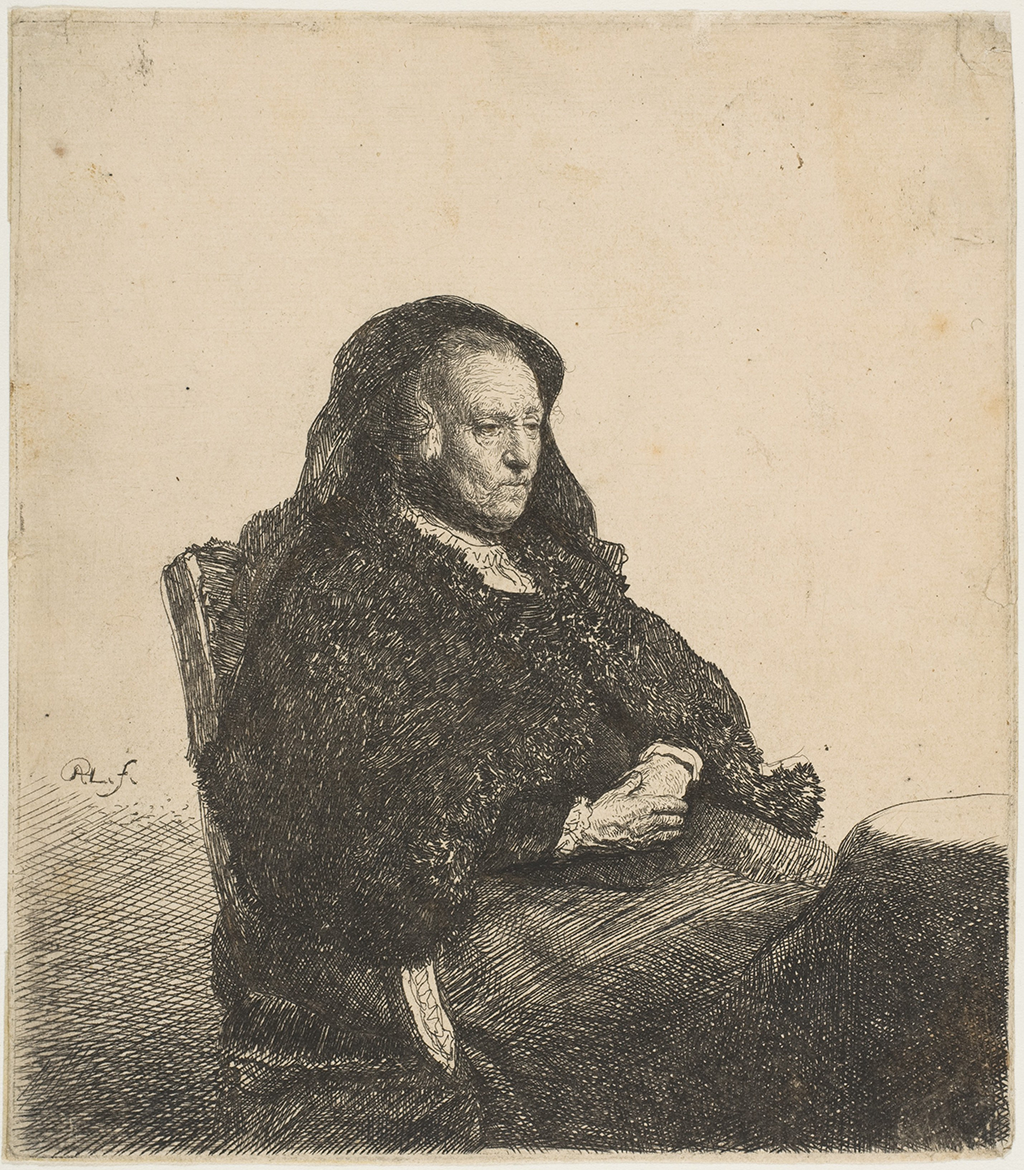
Rembrandt’s etchings circulated widely in the late 1800s as part of a significant print revival in England and France. Van Gogh, who worked for six years at the international art dealer Goupil et Cie, would have had access to Rembrandt’s prints. Additionally, he encountered the artist’s work through books, exhibitions, and art museums.10It is highly likely that Van Gogh saw Rembrandt’s portrait An Old Woman called “The Artist’s Mother,” ca. 1627–29, oil on panel, 24 1/8 x 18 11/16 in. (61.3 x 47.4 cm), Hampton Court Palace, East Molesey, https://www.rct.uk/collection/405000/an-old-woman-called-the-artists-mother, during his visit to Hampton Court between June 24, 1876, and July 1, 1876. Bernard, too, was familiar with the Old Masters. He resided with his grandmother in Lille during his formative years, from the age of nine. There he immersed himself in reading and drawing, and he spent time in a stained-glass studio. He also copied paintings in the local art museum.11Several sources of scholarship mention his early interest in drawing and stained glass, including Welsh-Ovcharov, Vincent Van Gogh and the Birth of Cloisonism, 260; and Stevens, Émile Bernard, 1868–1941, 93. In 1881, Bernard participated in the enthusiastic reappraisal of the work of Frans Hals (Dutch, 1582–1666),12Théophile Thoré’s reappraisal of Hals’s historical role and gestural brushwork, published in France under the pseudonym William Burger in the late 1850s, contributed to a revival of interest in Hals’s work starting in the 1860s. See Frances Suzman Jowell, “Thoré-Bürger and the Revival of Frans Hals,” Art Bulletin 56, no. 1 (1974): 101–17. See also Frances S. Jowell, “The Rediscovery of Frans Hals,” in Seymour Slive et al., Frans Hals, exh. cat. (Washington, DC: National Gallery of Art, 1989), 61–86. For a discussion of Hals and intersections with modernity, see Christopher D. M. Atkins, The Signature Style of Frans Hals: Painting, Subjectivity, and the Market in Early Modernity (Amsterdam: Amsterdam University Press, 2012), 195–237. making a copy after a copy of Hals’s enigmatic portrait of an old woman, Malle Babbe (ca. 1633–35; Gemäldegalerie, Berlin).13A studio copy of the Frans Hals painting of Malle Babbe exists in Bernard’s hometown museum, the Palais des Beaux-Arts de Lille, https://rkd.nl/en/explore/images/302444. Researchers at the Gemäldegalerie have identified the sitter as Barbara Claes (d. 1663), a “mentally handicapped, ‘mad’ (malle) woman from Haarlem.” See Michael Eissenhauer, ed., Gemäldegalerie (Berlin): 200 Masterpieces of European Painting (Berlin: E. A. Seemann Henschel GmbH & Co. KG, 2019), https://recherche.smb.museum/detail/863623/malle-babbe. Bernard and his contemporaries admired Hals’s virtuoso brushwork, vibrant colors, lively compositions, and ability to realistically portray people and characters of his time.
Bernard’s engagement with the art of the past coalesced in formal training he received in the fall of 1884 at the age of sixteen in the Paris-based studio of the academic painter Fernand-Anne Piestre, known as Fernand Cormon (1845–1924). There he befriended several fellow students, including Louis Anquetin (1861–1932) and Van Gogh, respectively seven and fifteen years Bernard’s seniors.14Bernard gained entrance to Cormon’s studio following the recommendation of the Russian painter Michail de Wylie (1838–1910), a friend of the family; Jean-Jacques Luthi and Armand Israel, Émile Bernard 1868–1941: Fondateur de l’Ecole de Pont-Aven et précurseur de l’art modern (Paris: Les Éditions de l’Amateur, 2003), 30. The curriculum included drawing from casts of classical sculptures and from the nude model, with the goal of guiding students to create works that would be accepted by the Salon’sSalon, the: Exhibitions organized by the French Royal Academy of Painting and Sculpture (Académie Royale de Peinture et de Sculpture) and its successor the Academy of Fine Arts (Académie des Beaux Arts), which took place in Paris from 1667 onward. jury. One can see these classical influences in Bernard’s first drawing of his grandmother from around 1884–86: a volumetric portrait bust with linear hatched lines on the contours of her face, neck, and chin that reveal Bernard’s understanding of the anatomical structure of a face (Fig. 2).15Even though the drawing is inscribed “84,” it is more likely that it was made around 1886. See Dorothee Hansen, ed., Émile Bernard: Am Puls Der Moderne, exh. cat. (Bremen: Kunsthalle Bremen, 2015), 98. The drawing also demonstrates his awareness of techniques that printmakers, including Rembrandt, used to define form.
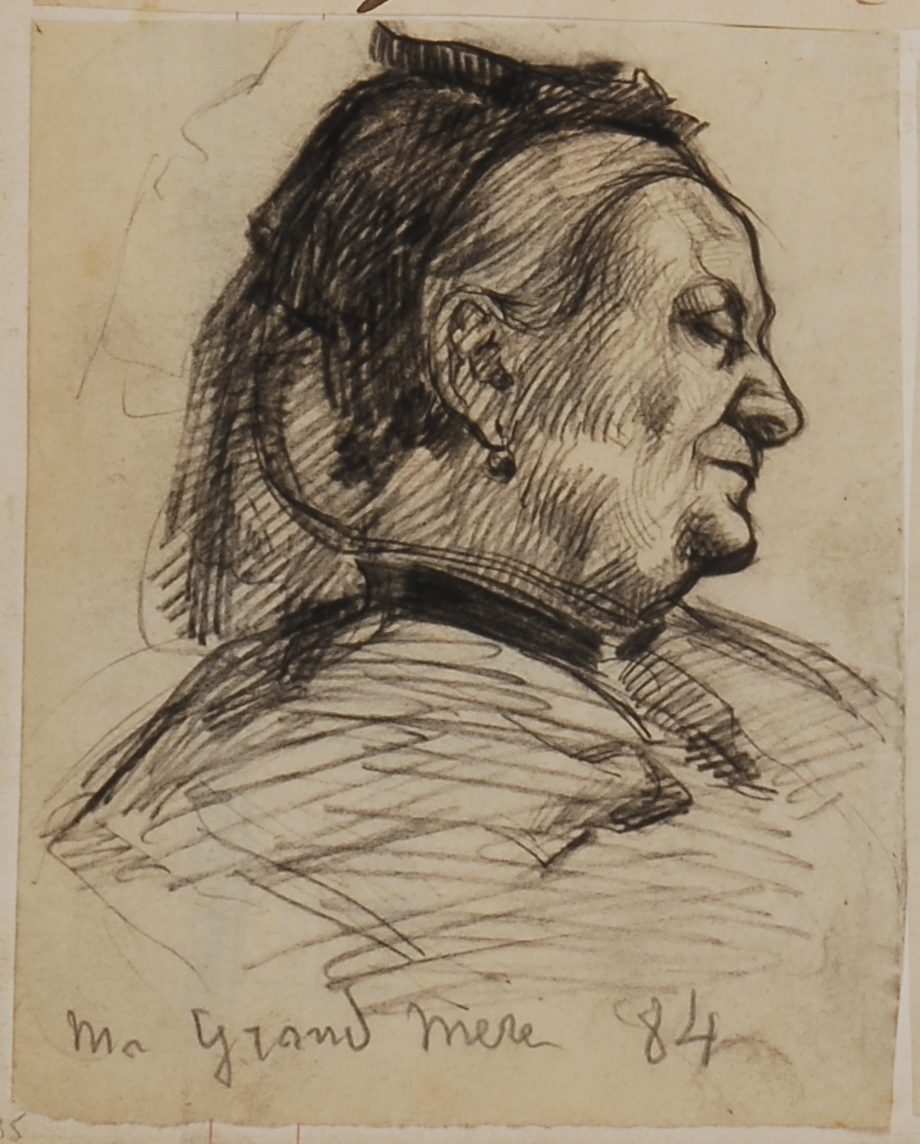
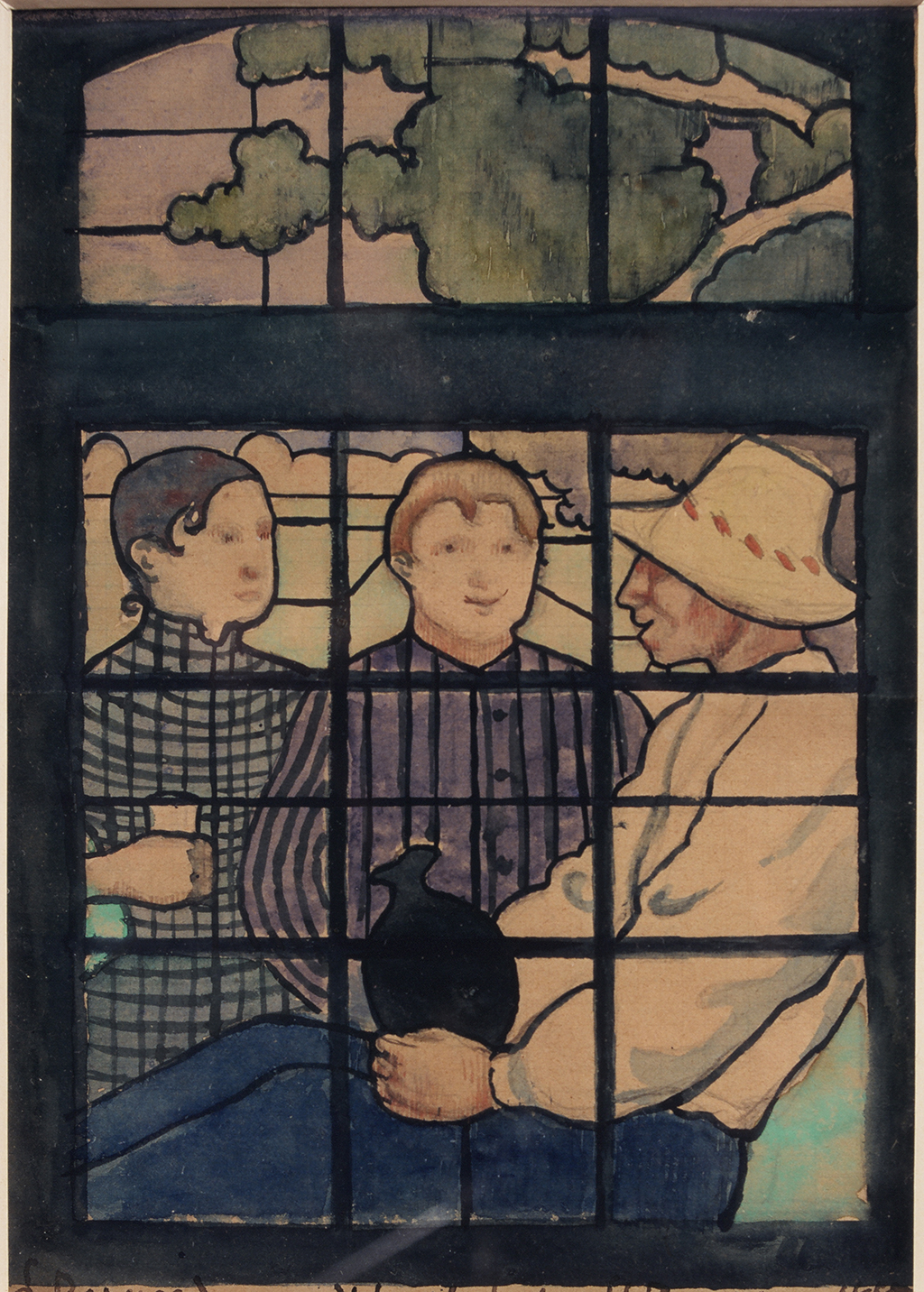
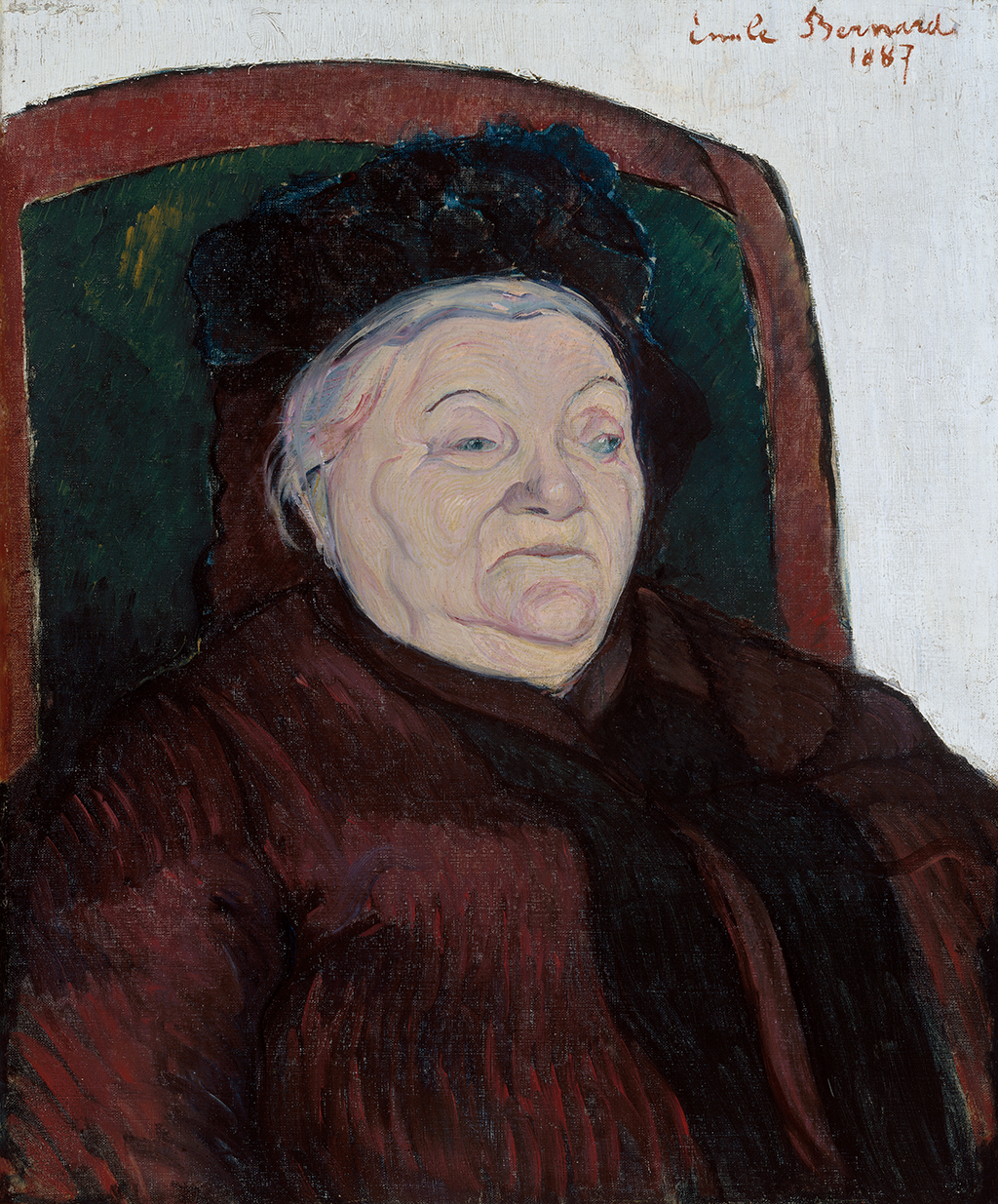 Fig. 4. Émile Bernard, The Artist’s Grandmother, 1887, oil on canvas, 23 5/8 x 19 7/8 in. (60 x 50.5 cm), Museum of Fine Arts, Boston, 61.165
Fig. 4. Émile Bernard, The Artist’s Grandmother, 1887, oil on canvas, 23 5/8 x 19 7/8 in. (60 x 50.5 cm), Museum of Fine Arts, Boston, 61.165
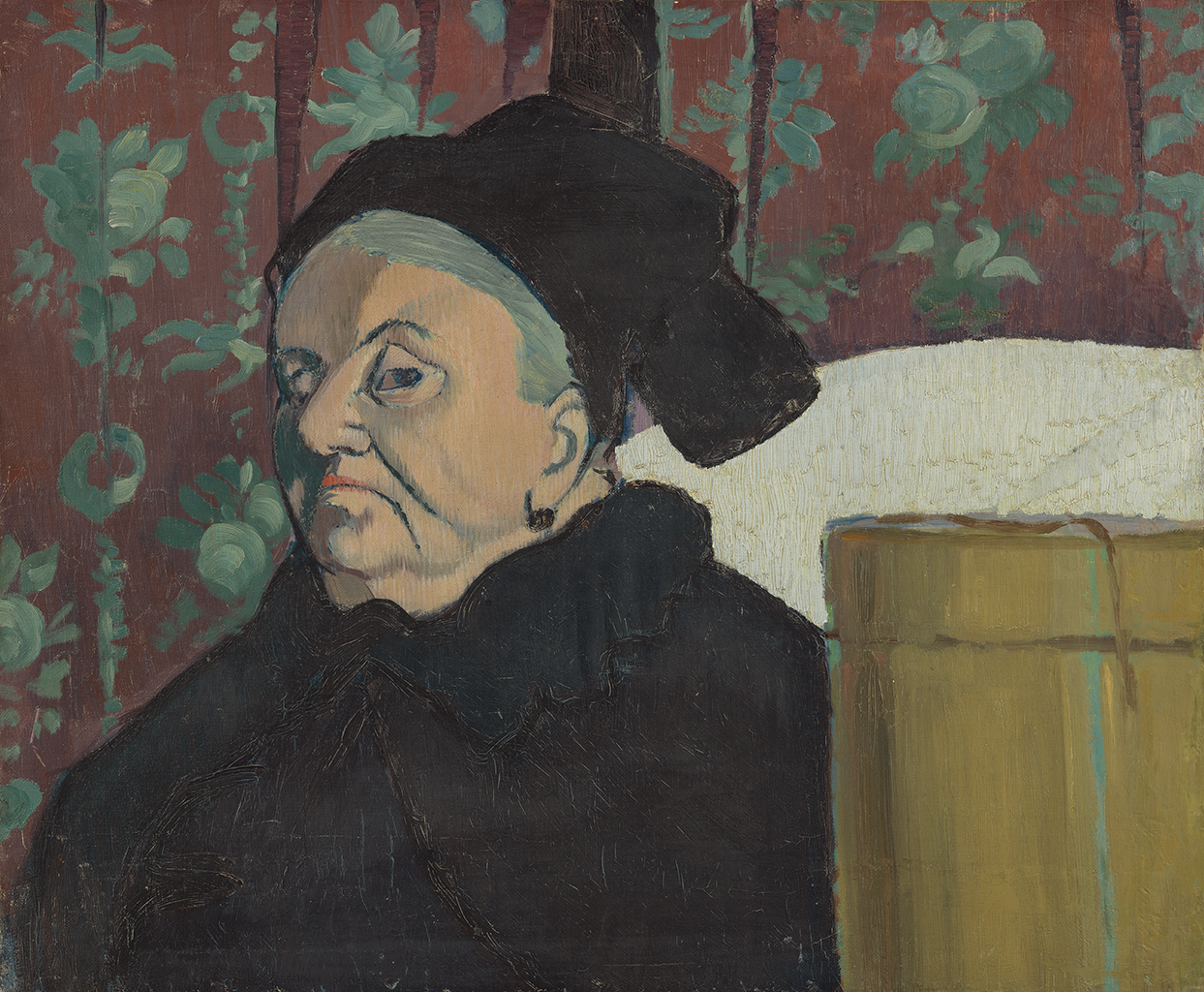 Fig. 5. Émile Bernard, Portrait of Bernard’s Grandmother, autumn 1887, oil on canvas, 20 7/8 x 25 1/4 in. (53 x 64 cm), Van Gogh Museum, Amsterdam, s0205V1962
Fig. 5. Émile Bernard, Portrait of Bernard’s Grandmother, autumn 1887, oil on canvas, 20 7/8 x 25 1/4 in. (53 x 64 cm), Van Gogh Museum, Amsterdam, s0205V1962
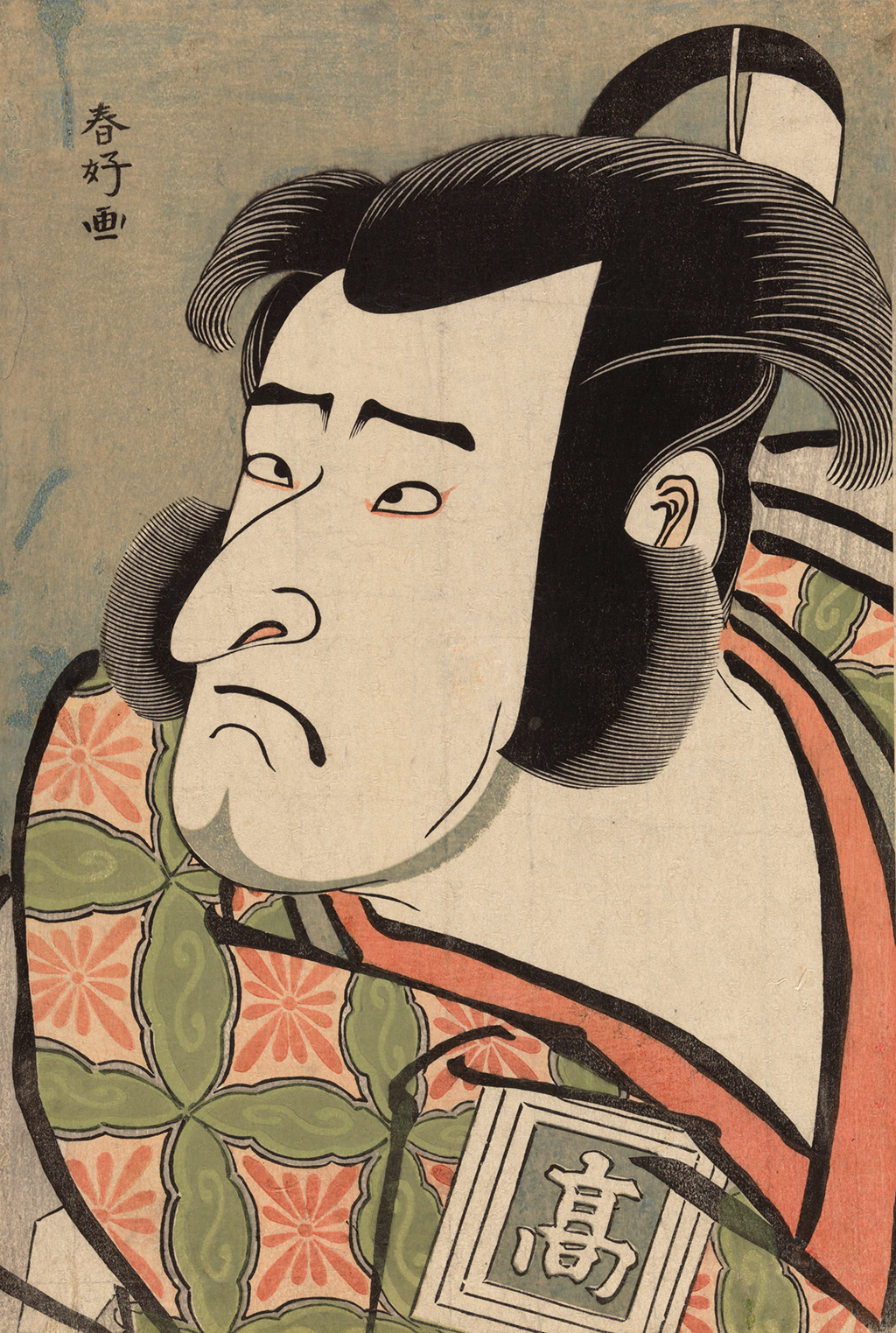 Fig. 6. Katsukawa Shunko, Portrait of Actor Ichikawa Komazȱ III, late 18th/early 19th century, woodblock print, ink, and color on paper, overall: 14 x 9 1/2 in. (35.6 x 24.1 cm), Purchase: William Rockhill Nelson Trust, 32-143/81
Fig. 6. Katsukawa Shunko, Portrait of Actor Ichikawa Komazȱ III, late 18th/early 19th century, woodblock print, ink, and color on paper, overall: 14 x 9 1/2 in. (35.6 x 24.1 cm), Purchase: William Rockhill Nelson Trust, 32-143/81
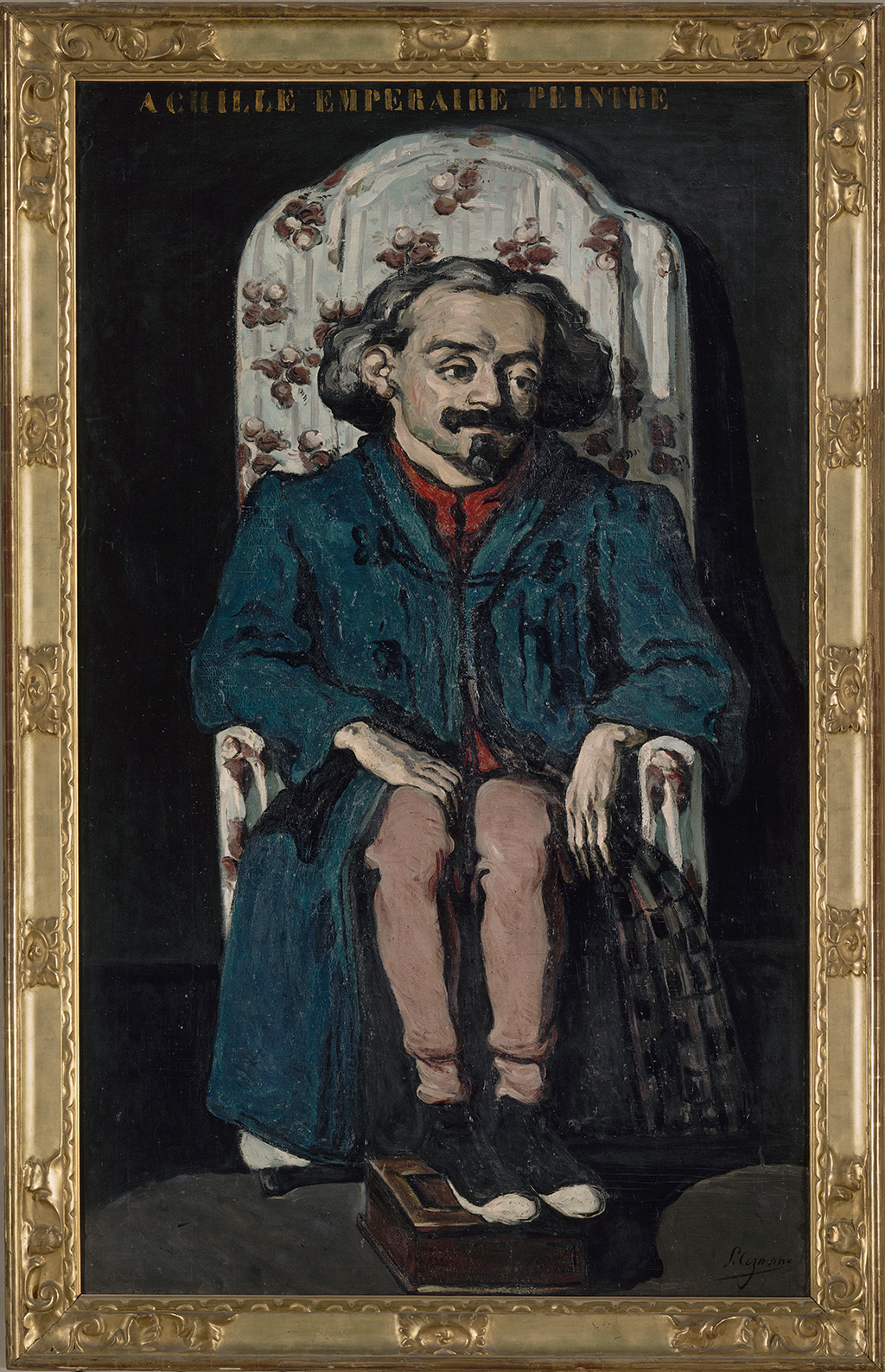 Fig. 7. Paul Cezanne, Portrait of Achille Emperaire, ca. 1868–1870, oil on canvas, 79 1/8 x 47 5/8 in. (201 x 121 cm), Musée d’Orsay, Paris, RF 1964-38. Photo: Hervé Lewandowski and Erich Lessing / Art Resource, NY
Fig. 7. Paul Cezanne, Portrait of Achille Emperaire, ca. 1868–1870, oil on canvas, 79 1/8 x 47 5/8 in. (201 x 121 cm), Musée d’Orsay, Paris, RF 1964-38. Photo: Hervé Lewandowski and Erich Lessing / Art Resource, NY
Bernard notoriously post-signed and sometimes postdated his paintings, making it difficult to securely date his work.30See Stevens, Émile Bernard, 1868–1941, 8, for this important disclaimer and challenge of establishing a chronology for Émile Bernard’s works. Nevertheless, it is this author’s contention that the Kansas City painting fits between the Boston and Amsterdam versions in a stylistic progression that demonstrates Bernard’s path toward the simplification of form, bold colors, and flat planes.31Some scholars, including MaryAnne Stevens, agree that the Boston portrait is the earliest. See Stevens, Émile Bernard, 1868–1941, 187. Collectively, the paintings reveal the many sources of inspiration that Bernard had absorbed up to this point in his nascent career. He embraced portraiture as “something old, but also brand new,” as Van Gogh had put it, echoing the Old Masters’ exploration of character in a new and modern way.
Historically, the Nelson-Atkins picture has not been included within the group of three paintings of Bernard’s grandmother in terms of stylistic analysis.32Van Gogh only ever mentions the Boston and Amsterdam versions of Bernard’s grandmother in his letters. It remained in Bernard’s possession until 1937, when it was sold to a twenty-two-year-old American collector, Leslie Paffrath.33See the accompanying provenance compiled by project assistant Danielle Hampton Cullen. It is possible that Bernard considered the Nelson-Atkins canvas unfinished, given the sketchiness of the hands and the lower portion of the composition. This may explain why, at least in 1901, he inventoried the painting as “not to be sold.”34See Fred Leeman, former chief curator at the Van Gogh Museum and Émile Bernard specialist, to Danielle Hampton Cullen, NAMA, July 23, 2020, NAMA curatorial files. By the 1920s and 1930s, however, Bernard was having little professional success, so he opened his own gallery in Paris’s fifth arrondissement, or district, where he sold prints and older works.35Laura Karp Lugo, “Du synthétisme à l’arrière-garde: le parcours d’Émile Bernard,” in Neil McWilliam, ed., Émile Bernard Au-Delà De Pont-Aven (Paris: Publications of the National Institute of Art History, 2012), para. 24, http://books.openedition.org/inha/4776. The sale of the Nelson-Atkins portrait to Paffrath, four years before Bernard’s death, marked a significant event.36Leslie Paffrath was born to immigrants in New York City in 1915 and enlisted in the armed services just before the outbreak of World War II. He served overseas during the war, setting up a base in Panama working on submarine rehabilitation. He was in Paris in 1937, and it was probably then that he acquired the painting directly from the artist. See the “Provenance” section of this entry. See also “Obituary for Leslie Paffrath (1915–2001),” Journal Times (Racine, WI), (January 12, 2001): https://journaltimes.com/friday-jan-12-2001/article_911e1711-a845-5249-b573-8b0aef94be6e.html. The portrait, while grounded in an appreciation of the Old Masters, also presented a new visual language that Bernard had developed. As an “old master” himself at this point in his life, Bernard perhaps recognized in the young collector, who had the world ahead of him, a reflection of the period in his own life when he created this portrait of his beloved grandmother, reminding him of the timeless artistic traditions, as well as innovative approach, that he boldly incorporated into his work.
Notes
-
Émile Bernard, “A Ma Grand’Mère,” in Le Voyage de l’Être: Poèmes d’Évolution . . . Suivi De Paysages Et Du Livre d’Hommages Depuis 1886 Jusqu’à 1898 (Cairo: Imprimerie Centrale Moussa Roditi), 346. All translations are by Aimee Marcereau DeGalan, unless otherwise noted.
-
See Émile Bernard, L’adventure de ma vie, unpublished manuscript, 71, cited in Bogomila Welsh-Ovcharov, Vincent Van Gogh and the Birth of Cloisonnism, exh. cat. (Toronto: Art Gallery of Ontario, 1981), 264.
-
Sophie Albertine Bodin-Lallement was first married to Henri Louis Joseph Bodin (1814–46) on April 23, 1838, with whom she had one daughter, the artist’s mother, Héloise Henriette Bodin (1839–1909). She married her second husband, Joseph Florimond Torck (1821–87), on May 14, 1849.
-
Bernard’s parents rented a house in Asnières in March of 1887; MaryAnne Stevens et al., Émile Bernard, 1868–1941: A Pioneer of Modern Art/Ein Wegbereiter der Moderne, exh. cat. (Zwolle: Waanders, 1990), 96.
-
Émile Bernard’s family first moved to Asnières in March of 1887 and later that autumn moved to a larger house at 5 Avenue de Beaulieu, at which point Bernard’s grandmother moved in with them; Stevens, Émile Bernard, 1868–1941, 97. As with many aspects of Bernard’s life, the timeline of events is difficult to reconcile with absolute certainty. However, based on the above, the presumed moment of exchange between Van Gogh and Bernard occurred sometime between November 1887 and February 19, 1888, when Van Gogh left Paris.
-
Vincent van Gogh to Émile Bernard, Arles, on or about Sunday, August 5, 1888, published in Leo Jansen, Hans Luijten, and Nienke Bakker, eds., Vincent Van Gogh: The Letters, online edition (Amsterdam and The Hague: Van Gogh Museum and Huygens, 2009), no. 655, https://vangoghletters.org/vg/letters/let655/letter.html."
-
Vincent van Gogh to Theo van Gogh, Saint-Rémy-de-Provence, Thursday, September 5, and Friday September 6, 1889, in Jansen et al., Letters, no. 800, https://vangoghletters.org/vg/letters/let800/letter.html.
-
It is possible Van Gogh saw this print or a similar version, which existed in multiple reproductions, including one by James McArdell (British, 1728/29–1765) realized around 1740–65. It is also highly likely that both he and Bernard were familiar with the Netherlandish School painting An Elderly Woman Praying or The Prophetess Anne, also known as Rembrandt’s Mother, 1664, oil on wood, Musée du Louvre, https://collections.louvre.fr/en/ark:/53355/cl010062132, as both artists visited the Louvre on many occasions, copying work as part of their course of study.
-
It is interesting to speculate whether Bernard was thinking of the representation of his grandmother as a type, rather than a strict portrait, based on Rembrandt’s and his contemporaries’ studies of elderly people portrayed at bust- or half-length known as “tronies” (meaning face or countenance). These works transcend the mere replication of old age and delve into the realm of imagination, skillfully incorporating costumes and vibrant lighting techniques. While Bernard’s grandmother appears in mourning dress and is therefore not in costume, she is nevertheless imaginatively presented. Aspiring artists during Rembrandt’s era created tronies as a means to establish their standing in the art world, leading to high demand among collectors. For more information on tronie portraits within the Dutch context, see Dagmar Hirschfelder, Tronie und Porträt in der niederlän-dischen Malerei des 17. Jahrhunderts (Berlin: Gebr. Mann Verlag, 2008), https://digi.ub.uni-heidelberg.de/diglit/hirschfelder2008.
-
It is highly likely that Van Gogh saw Rembrandt’s portrait An Old Woman called “The Artist’s Mother,” ca. 1627–29, oil on panel, 24 1/8 x 18 11/16 in. (61.3 x 47.4 cm), Hampton Court Palace, East Molesey, https://www.rct.uk/collection/405000/an-old-woman-called-the-artists-mother, during his visit to Hampton Court between June 24, 1876, and July 1, 1876.
-
Several sources of scholarship mention his early interest in drawing and stained glass, including Welsh-Ovcharov, Vincent Van Gogh and the Birth of Cloisonism, 260; and Stevens, Émile Bernard, 1868–1941, 93.
-
Théophile Thoré’s reappraisal of Hals’s historical role and gestural brushwork, published in France under the pseudonym William Burger in the late 1850s, contributed to a revival of interest in Hals’s work starting in the 1860s. See Frances Suzman Jowell, “Thoré-Bürger and the Revival of Frans Hals,” Art Bulletin 56, no. 1 (1974): 101–17. See also Frances S. Jowell, “The Rediscovery of Frans Hals,” in Seymour Slive et al., Frans Hals, exh. cat. (Washington, DC: National Gallery of Art, 1989), 61–86. For a discussion of Hals and intersections with modernity, see Christopher D. M. Atkins, The Signature Style of Frans Hals: Painting, Subjectivity, and the Market in Early Modernity (Amsterdam: Amsterdam University Press, 2012), 195–237.
-
A studio copy of the Frans Hals painting of Malle Babbe exists in Bernard’s hometown museum, the Palais des Beaux-Arts de Lille, https://rkd.nl/en/explore/images/302444. Researchers at the Gemäldegalerie have identified the sitter as Barbara Claes (d. 1663), a “mentally handicapped, ‘mad’ (malle) woman from Haarlem.” See Michael Eissenhauer, ed., Gemäldegalerie (Berlin): 200 Masterpieces of European Painting (Berlin: E. A. Seemann Henschel GmbH & Co. KG, 2019), https://recherche.smb.museum/detail/863623/malle-babbe.
-
Bernard gained entrance to Cormon’s studio following the recommendation of the Russian painter Michail de Wylie (1838–1910), a friend of the family; Jean-Jacques Luthi and Armand Israel, Émile Bernard 1868–1941: Fondateur de l’Ecole de Pont-Aven et précurseur de l’art modern (Paris: Les Éditions de l’Amateur, 2003), 30.
-
Even though the drawing is inscribed “84,” it is more likely that it was made around 1886. See Dorothee Hansen, ed., Émile Bernard: Am Puls Der Moderne, exh. cat. (Bremen: Kunsthalle Bremen, 2015), 98.
-
In Émile Bernard, “Confidences,” La Vie, no. 44, December 21, 1912, 249.
-
Archibald Standish Hartrick, A Painter’s Pilgrimage through Fifty Years (Cambridge: Cambridge University Press, 1939), 42.
-
Hartrick, Painter’s Pilgrimage, 42.
-
Luthi and Israel, Émile Bernard 1868–1941, 35.
-
Bernard, “Confidences,” 249. Bernard also copied works in the Musée des Beaux-Arts at Dunkerque as early as the summer of 1882, as well in the Musée des Beaux-Arts, Lille, and the Louvre, as noted in his unpublished autobiography L’Aventure de ma vie, 10–13, 24, 41, cited in Stevens, Émile Bernard, 1868–1941, 25n26.
-
Bernard left on April 6, 1886, and went through St. Malô and Mont St. Michel to St. Briac, where he stayed for two months at Mme Lemasson’s Inn, then via Lamballe, Tréguier, Morlaix, Landereau, Douarnenez, Faouët, Quimper, and Plougastel to Concarneau by the end of July. For a more detailed account of this journey, see Dorothee Hansen, “Skizzenbuchblätter aus der Bretagne–Emile Bernards erste Reise zu Fuß 1886,” in Hansen, ed., Émile Bernard: Am Puls Der Moderne, 26–45.
-
Van Gogh shared his collection of Japanese prints with Bernard and took fellow Cormon classmates Anquetin and Bernard to see the printseller Samuel Bing’s collection of Japanese prints too. See Stevens, Émile Bernard, 1868–1941, 97.
-
Bernard saw Paul Cezanne’s portrait Achille Emperaire (see Fig. 7) at art dealer/supplier Père Tanguy’s (1825–94) shop that fall and was struck by Cezanne’s presentation of this boldly drawn and simplified figure against a patterned background. See Émile Bernard, “Julien Tanguy,” Mercure de France (December 16, 1908): 600–16.
-
Bernard was also impressed with Van Gogh’s own work, including the compressed space and somber coloring of his painting Potato Eaters (1885; Van Gogh Museum, Amsterdam), which he saw during a studio visit sometime in the early spring of 1887. See Stevens, Émile Bernard, 1868–1941, 110.
-
In the winter of 1886–87, Bernard exhibited several pointillist works in Asnières that he made during his summer trip through Brittany. French Neo-Impressionist painter Paul Signac (1863–1935)—who along with Georges Seurat (1859–91) helped develop pointillism—saw the works and invited Bernard to visit his studio. Bernard went along with Anquetin, and after that visit they concluded, “while the procedures of neo-impressionism might be good for the luminous translation of light, they distorted the color.” After this point they decided to head in another direction in their approach to art. See Stevens, Émile Bernard, 1868–1941, 96, 108–09.
-
For more on the origins of Cloisonnism and its progression toward synthetism and pictorial symbolism, see Welsh-Ovcharov, Vincent Van Gogh and the Birth of Cloisonism, 19–63.
-
Edward Dujardin, “Aux XX et aux Indépendants. Le cloisonnisme,” La Revue Indépendante 6, no. 17 (March 1888): 487–92. Although Bernard was not named in this article about the development of Cloisonnism, Van Gogh acknowledged to his brother Theo that “young Bernard has perhaps gone further than Anquetin” in the Japanese style. Vincent van Gogh to Theo van Gogh, Arles, on or about Tuesday, June 5, 1888, in Jansen et al., Letters, no. 620, https://vangoghletters.org/vg/letters/let620/letter.html.
-
See accompanying technical essay by Diana Jaskierny.
-
See Van Gogh to his sister, Willemien van Gogh, Saint-Rémy-de-Provence, Monday, December 9 or Tuesday, December 10, 1889, in Jansen et al., Letters, no. 827, https://vangoghletters.org/vg/letters/let827/letter.html. Van Gogh was enraptured with Bernard’s portraits of his grandmother, and the two artists exchanged portraits. Van Gogh received Bernard’s portrait of his grandmother, now in the Van Gogh Museum (see Fig. 5). Bernard’s depictions of his grandmother influenced Van Gogh’s own approach to his work; for example, An Old Woman of Arles (February 1888; https://www.vangoghmuseum.nl/en/collection/s0145V1962).
-
See Stevens, Émile Bernard, 1868–1941, 8, for this important disclaimer and challenge of establishing a chronology for Émile Bernard’s works.
-
Some scholars, including MaryAnne Stevens, agree that the Boston portrait is the earliest. See Stevens, Émile Bernard, 1868–1941, 187.
-
Van Gogh only ever mentions the Boston and Amsterdam versions of Bernard’s grandmother in his letters.
-
See the accompanying provenance compiled by project assistant Danielle Hampton Cullen.
-
See Fred Leeman, former chief curator at the Van Gogh Museum and Émile Bernard specialist, to Danielle Hampton Cullen, NAMA, July 23, 2020, NAMA curatorial files.
-
Laura Karp Lugo, “Du synthétisme à l’arrière-garde: le parcours d’Émile Bernard,” in Neil McWilliam, ed., Émile Bernard Au-Delà De Pont-Aven (Paris: Publications of the National Institute of Art History, 2012), para. 24, http://books.openedition.org/inha/4776.
-
Leslie Paffrath was born to immigrants in New York City in 1915 and enlisted in the armed services just before the outbreak of World War II. He served overseas during the war, setting up a base in Panama working on submarine rehabilitation. He was in Paris in 1937, and it was probably then that he acquired the painting directly from the artist. See the “Provenance” section of this entry. See also “Obituary for Leslie Paffrath (1915–2001),” Journal Times (Racine, WI), (January 12, 2001): https://journaltimes.com/friday-jan-12-2001/article_911e1711-a845-5249-b573-8b0aef94be6e.html.
Technical Entry
Citation
Chicago:
Diana M. Jaskierny, “Émile Bernard, The Artist’s Grandmother, 1887,” technical entry in French Paintings and Pastels, 1600–1945: The Collections of the Nelson-Atkins Museum of Art, ed. Aimee Marcereau DeGalan (Kansas City: The Nelson-Atkins Museum of Art, 2023), https://doi.org/10.37764/78973.5.702.5407.
MLA:
Jaskierny, Diana M. “Émile Bernard, The Artist’s Grandmother, 1887,” catalogue entry. French Paintings and Pastels, 1600–1945: The Collections of The Nelson-Atkins Museum of Art, edited by Aimee Marcereau DeGalan, Nelson-Atkins Museum of Art, 2023. doi: 10.37764/78973.5.702.5407.
Émile Bernard’s The Artist’s Grandmother, a portrait of Sophie
Bodin-Lallement, exemplifies his CloisonnistCloisonnism: A style of painting associated with some of the painters who worked at Pont-Aven in Brittany in the 1880s and 1890s. It is characterized by flat forms of bold colors separated by dark outlines. The term is derived from cloisonné, a kind of decorative enamelwork. style with animated
brushwork and unexpected color choices. The painting was executed on a
moderately coarse plain-weaveplain weave: A basic textile weave in which one weft thread alternates over and under the warp threads. Often this structure consists of one thread in each direction, but threads can be doubled (basket weave) or tripled to create more complex plain weave. Plain weave is sometimes called tabby weave. canvas, with prominent vertical
threads.1The approximate thread count is 11 x 12 threads per centimeter squared. While the painting dimensions do not appear to have been
significantly altered, the composition extends along the left tacking margintacking margins: The outer edges of canvas that wrap around and are attached to the stretcher or strainer with tacks or staples. See also tacking edge., with the sitter’s shoulder reaching the edge of the extant canvas (Fig. 8). In contrast, the composition does not entirely reach
the right or bottom edges of the canvas, where the raw, unprimed canvas
is visible along the bottom edge (Fig. 9).
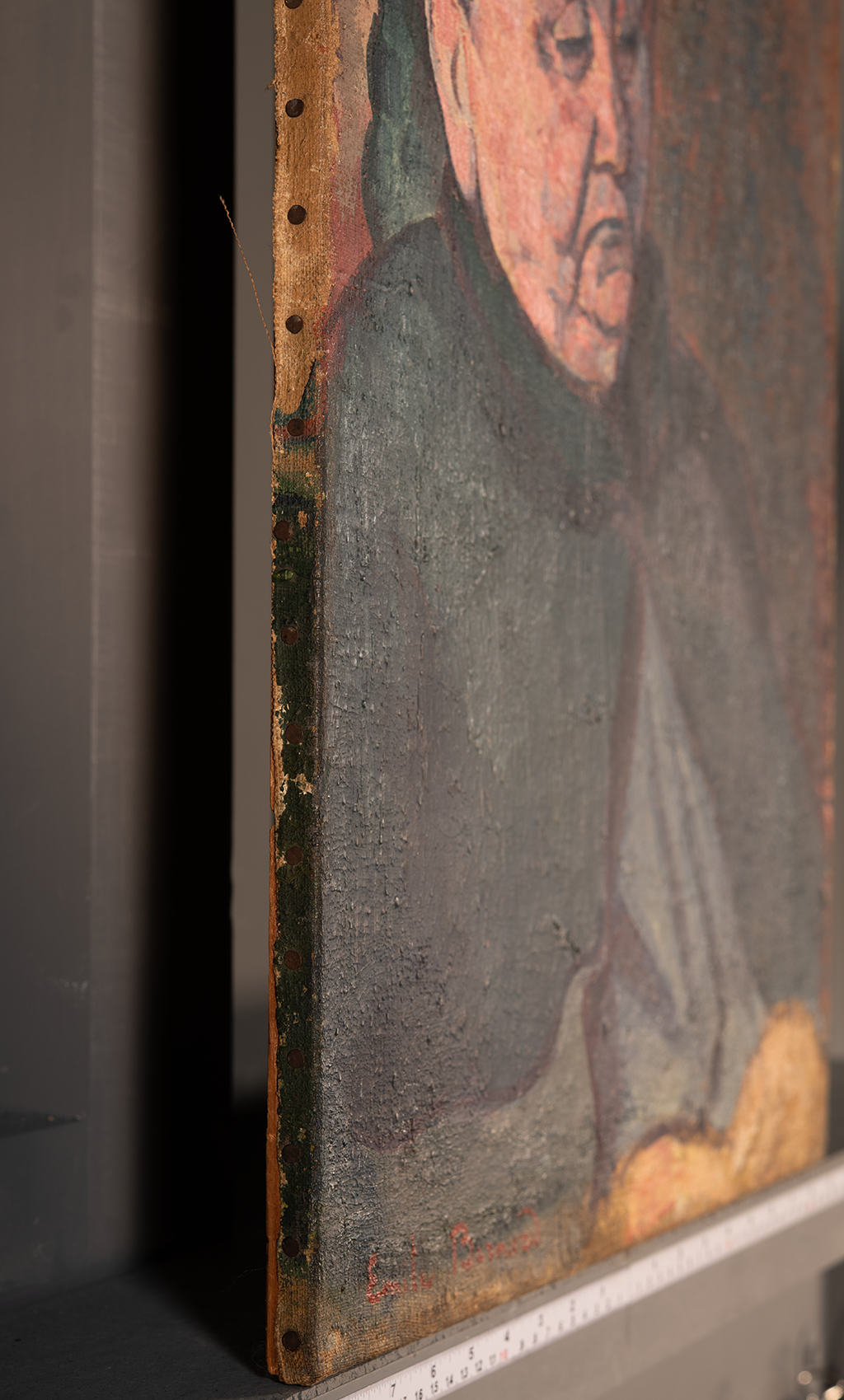 Fig. 8. Detail of the left tacking margin where the composition extends to the canvas edge, The Artist’s Grandmother (1887)
Fig. 8. Detail of the left tacking margin where the composition extends to the canvas edge, The Artist’s Grandmother (1887)
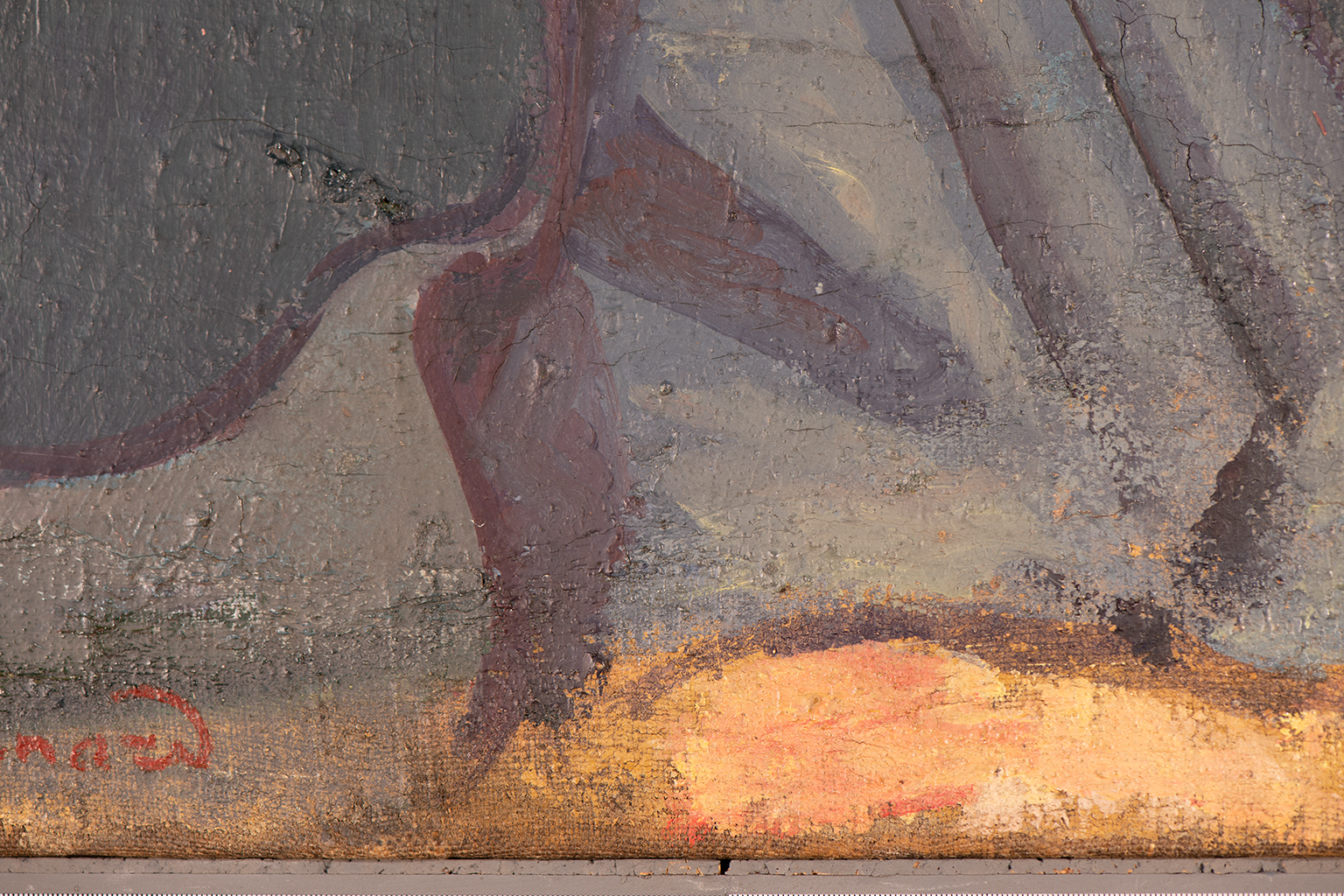 Fig. 9. Detail of the bottom edge of the picture plane and exposed raw canvas, The Artist’s Grandmother (1887)
Fig. 9. Detail of the bottom edge of the picture plane and exposed raw canvas, The Artist’s Grandmother (1887)
As the composition does not line up exactly with the picture planepicture plane: The two-dimensional surface where the artist applies paint., there is only one set of tack holes along the canvas margins, and cuspingcusping: A scalloped pattern along the canvas edges that relates to how the canvas was stretched. Primary cusping reveals where tacks secured the canvas to the support while the ground layer was applied. Secondary cusping can form when a pre-primed canvas is re-stretched by the artist prior to painting. on all four sides is aligned with the tack holes, the painting may have been completed on unstretched canvas that was later attached to the wooden support. Canvas impressions that were made in the wet paint of the background reveal that Bernard likely stacked his paintings before they were completely cured (Fig. 10). These impressions in the paint could be further evidence that the painting was completed while unstretched and was stacked with other unstretched canvases.
Other features of the canvas indicate that it may have been reused.
Light green and blue paint, seemingly unrelated to the portrait, is
located beyond the turnover edgeturnover edge: The point at which the canvas begins to wrap around the stretcher, at the junction between the picture plane and tacking margin. See also foldover edge. (Fig. 11).2Similarly, red and green paint is visible along the top of the left tacking margin. Textural anomalies in the
lower third of the painting further suggest an underlying paint layer.
X-radiographyX-ray radiography (also referred to as x-radiography or radiography): Radiography is an examination tool analogous to the use of X-rays in medicine whereby denser components of a painted composition can be recorded as an inverted shadow image cast on film or a digital X-ray imaging plate from a source such as an X-ray tube. The method has been used for more than a century and is most effective with dense pigments incorporating metallic elements such as lead or zinc. It can reveal artist changes, underlying compositions, and information concerning the artwork’s construction and condition. The resulting image is called an x-radiograph or radiograph. It differs from the uses of X-ray spectrometry in being dependent on the density of the paint to absorb X-rays before they reach the film or image plate and being non-specific as to which elements are responsible for the resulting shadow image. confirms that an oval or egg shape is present in this
region, but what this layer might represent or the extent of its
completion could not be determined (Fig. 12).
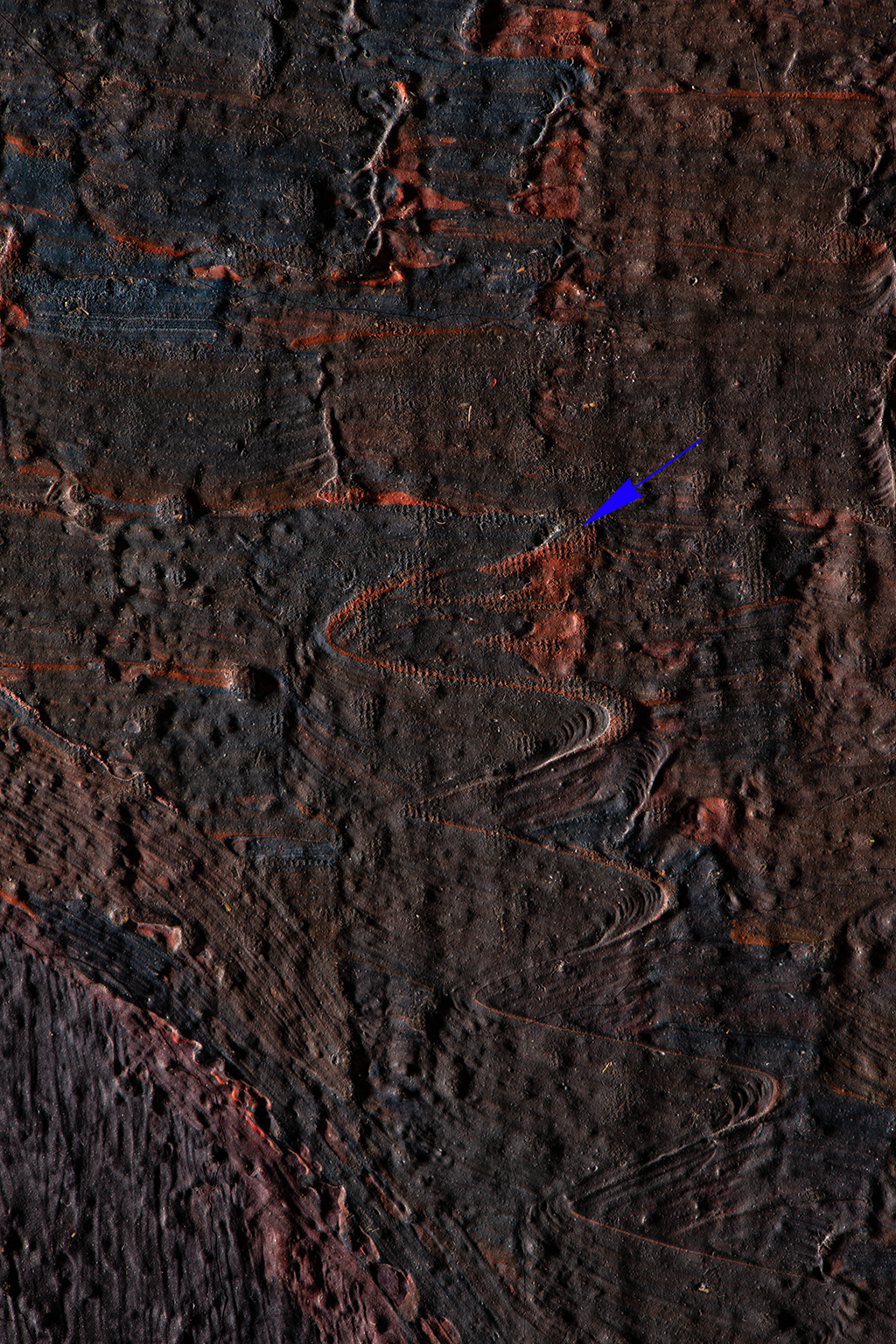 Fig. 10. Raking light detail of zig-zag brushwork in the background and canvas impressions indicated with blue arrow, The Artist’s Grandmother (1887)
Fig. 10. Raking light detail of zig-zag brushwork in the background and canvas impressions indicated with blue arrow, The Artist’s Grandmother (1887)
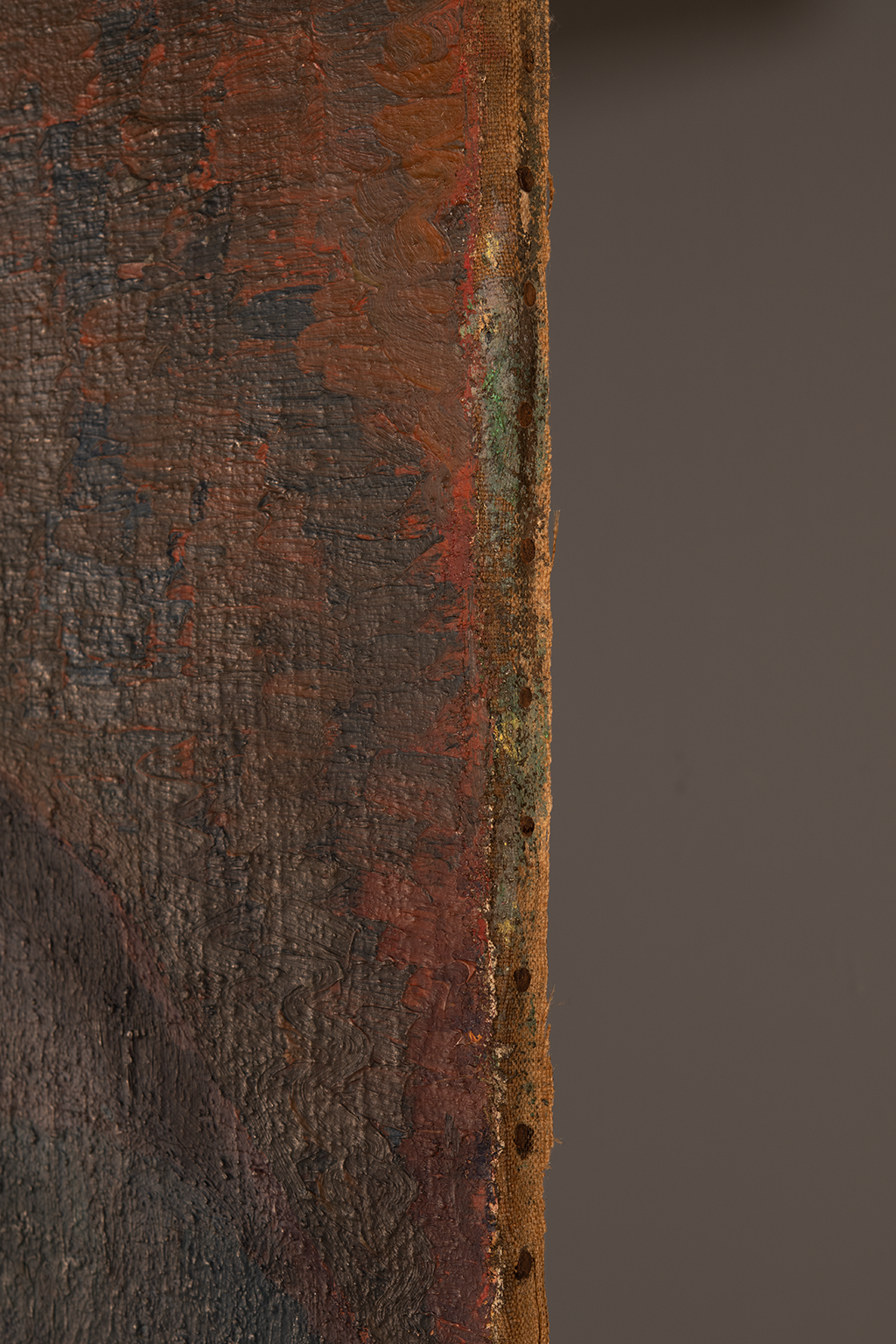 Fig. 11. Detail of the right tacking margin with blue and green lower paint visible, The Artist’s Grandmother (1887)
Fig. 11. Detail of the right tacking margin with blue and green lower paint visible, The Artist’s Grandmother (1887)
This lower paint layer appears to be directly placed on the raw canvas. Once this early composition was abandoned, a white layer was spread across the majority of the canvas. Artist-applied, this white layer acts as a groundground layer: An opaque preparatory layer applied to the support, either commercially or by the artist, to prevent absorption of the paint into the canvas or panel. See also priming layer.; however, the primary function was likely to block out the first composition. As with the depiction of his grandmother, Bernard did not extend the white layer to the bottom edge of the present picture plane. It does extend to the left edge of the canvas tacking margin, just as the portrait does, which could suggest that the canvas was slightly cropped before stretching.3Along the right side, the white layer reaches the turnover edge but does not extend to the tacking margin.
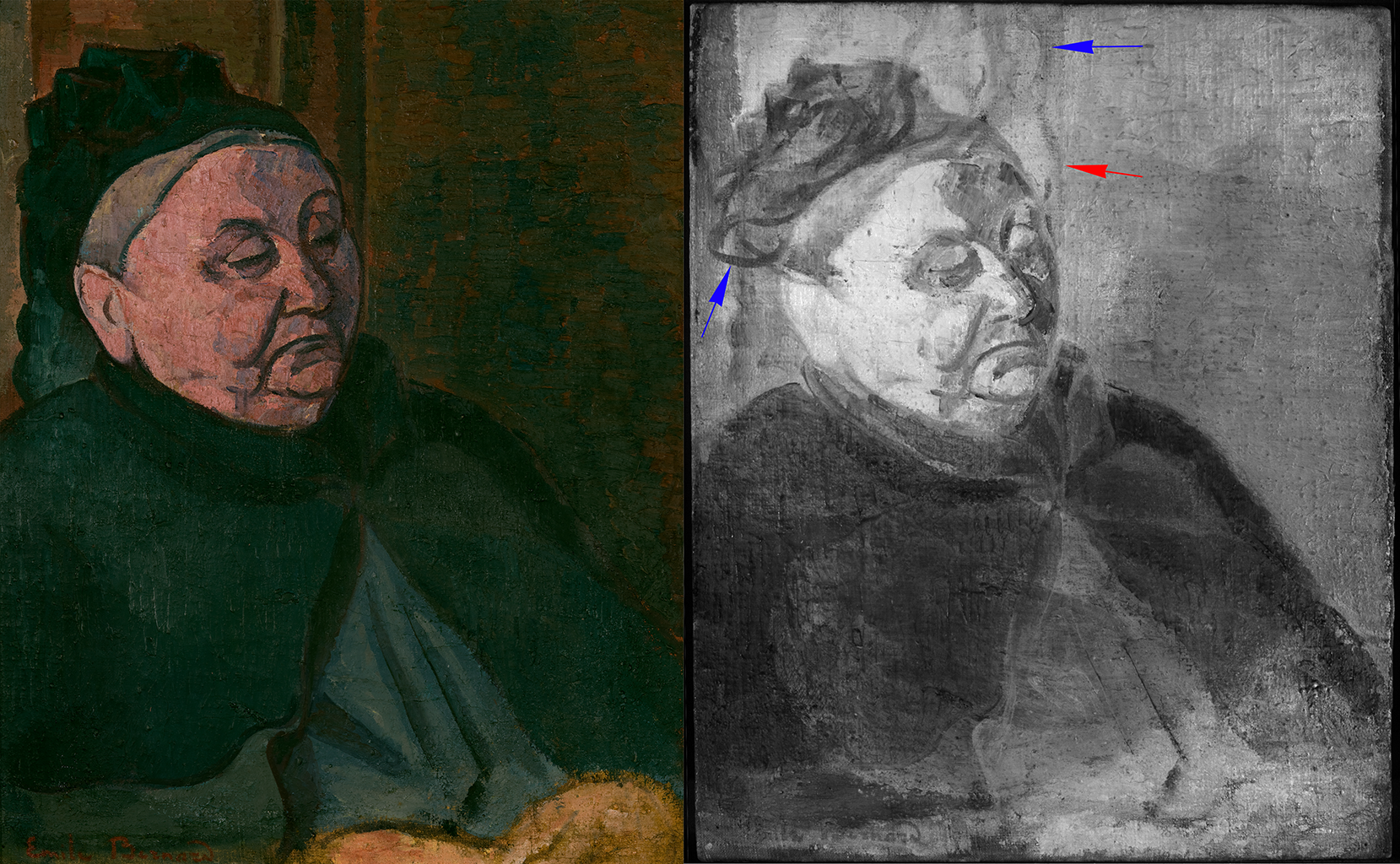
The portrait of Sophie Bodin-Lallement was built with multiple paint
layers, formed with active, painterly brushwork. Beneath her hair,
bright light blue is evident through skips in the overlying paint (Fig.
14). The blue appears to be limited to this area, with the white layer
visible in surrounding cracks, indicating that the blue paint is likely
a lower layer of the hair and unrelated to the earlier composition.6Within the cloak, bright red paint is visible in cracks with high magnification. It is unclear if the red is a lower layer of the portrait or if it relates to the earlier composition.
To the right of the sitter, deep reds and blues are swirled together
wet-into-wetwet-into-wet: An oil painting technique which involves blending of colors on the picture surface., accompanied by zig-zagging strokes that create depth in an
otherwise dark background (see Fig. 10).
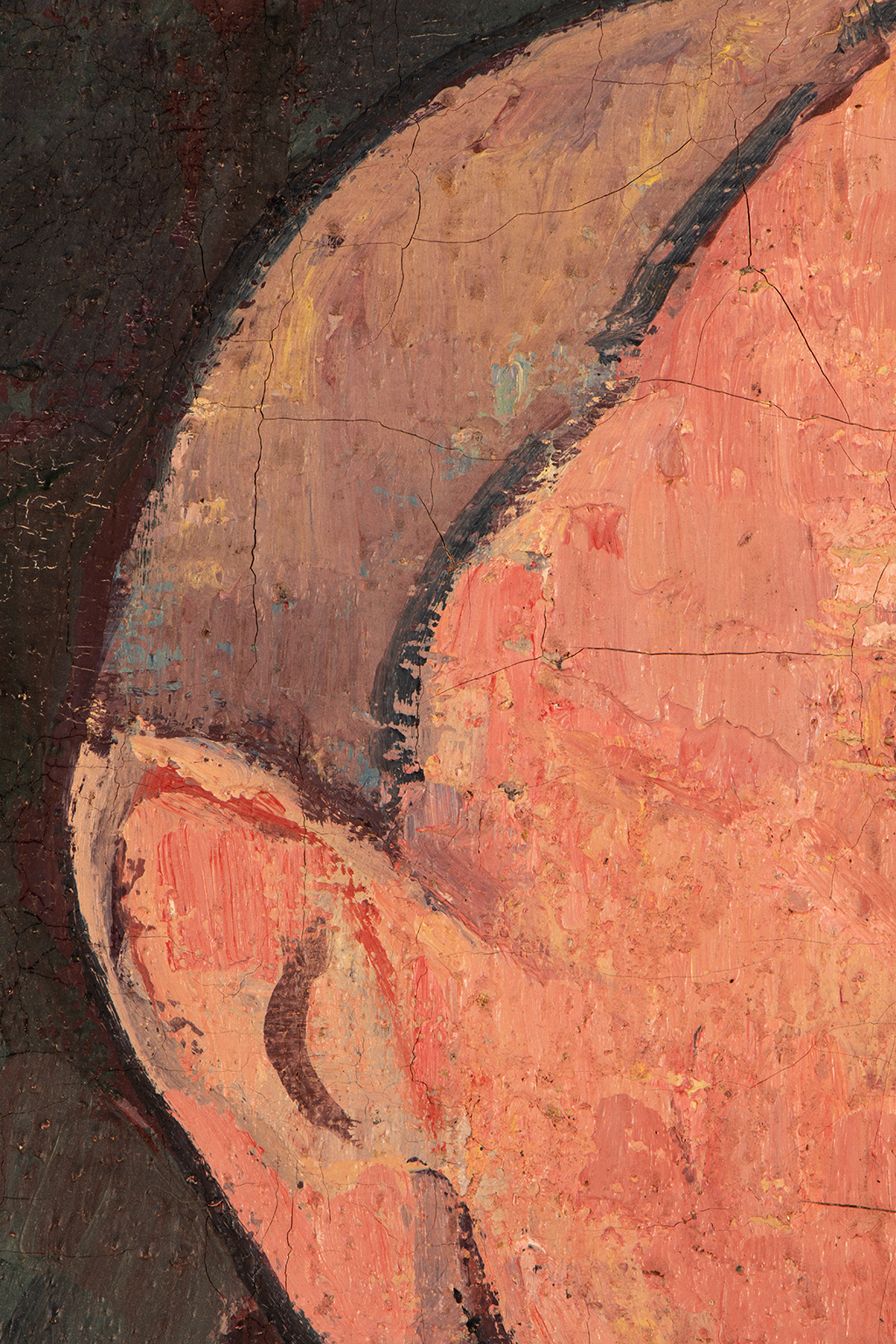 Fig. 14. Detail of light blue paint beneath the sitter’s hair, The Artist’s Grandmother (1887)
Fig. 14. Detail of light blue paint beneath the sitter’s hair, The Artist’s Grandmother (1887)
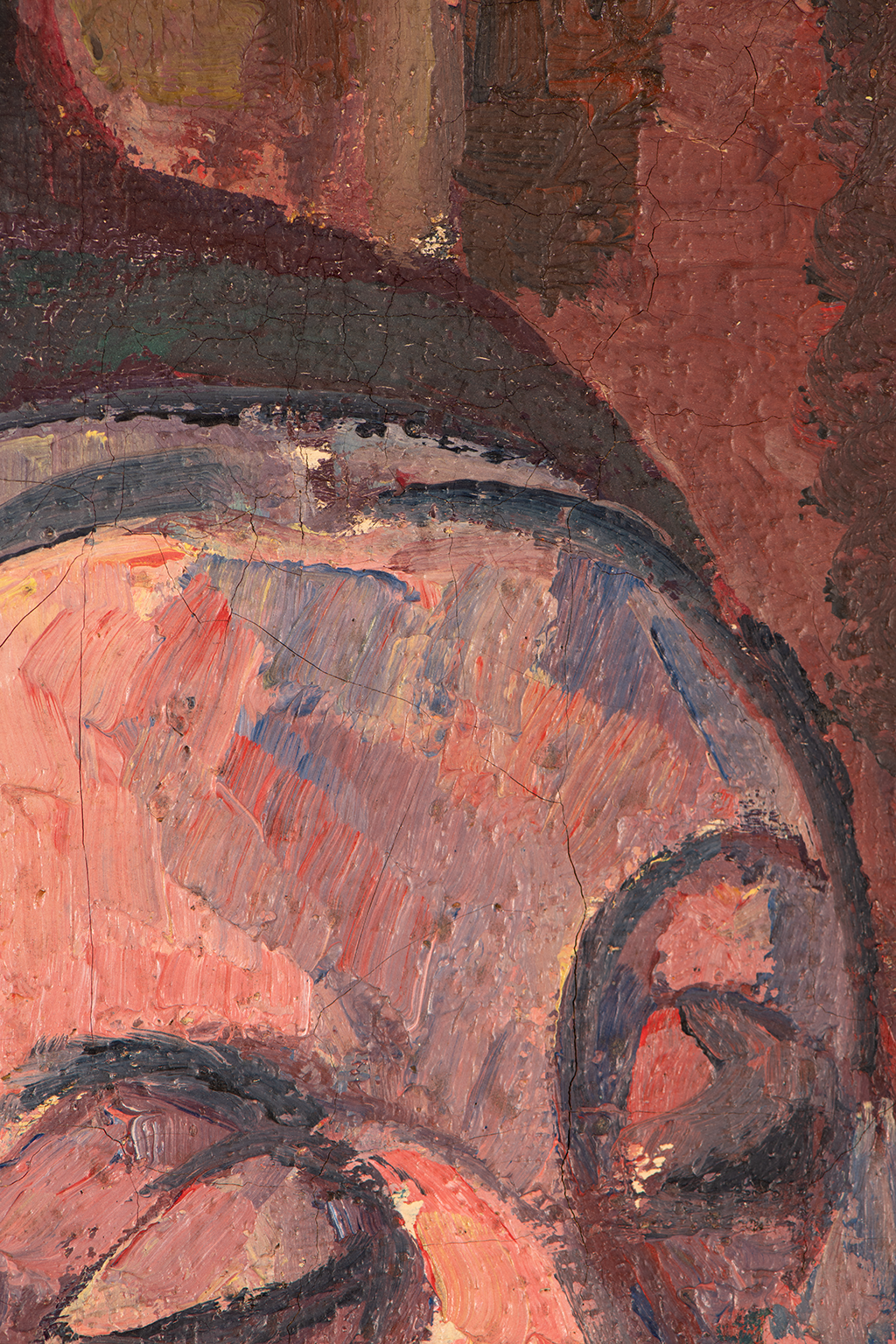 Fig. 15. Detail of brushwork in the sitter’s forehead, The Artist’s Grandmother (1887)
Fig. 15. Detail of brushwork in the sitter’s forehead, The Artist’s Grandmother (1887)
The sitter’s face was constructed with short brushstrokes, creating dimensionality through facets. With each stroke, the brush was heavily loaded with blue, red, and white paint, and often these colors remained relatively undisturbed, especially on the forehead (Fig. 15). Dark, rich, thickly painted brushstrokes outline her features, quintessential of the Cloisonnist style he established in later religious scenes.7Although this portrait does not have the flat planes of color typical of Cloisonnism, the thick, dark outlines show the artist moving in this direction. Fred Leeman, Odilon Redon and Émile Bernard: Masterpieces from the Andries Bonger Collection, exh. cat. (Amsterdam: Van Gogh Museum, 2009), 31. See also Bogomila Welsh-Ovcharov, Vincent van Gogh and the Birth of Cloisonism, exh. cat. (Toronto: Art Gallery of Ontario, 1980), 31. Bernard worked quickly as he completed the portrait, with the outlines often displacing the thick paint of her face before it dried.
The painting is in good condition overall. Following its 2017 acquisition, the piece received conservation treatment to remove multiple discolored natural resin varnish layers. In order to provide an adequate saturation of the paint layer but also retain an unvarnished appearance, a thin layer of synthetic varnish was applied, and any excess was blotted away. The paint layer is in excellent condition with little retouchingretouching: Paint application by a conservator or restorer to cover losses and unify the original composition. Retouching is an aspect of conservation treatment that is aesthetic in nature and that differs from more limited procedures undertaken solely to stabilize original material. Sometimes referred to as inpainting or retouch. present. The canvas has a slight convex shape but is structurally sound with stable tacking margins.
Notes
-
The approximate thread count is 11 x 12 threads per centimeter squared.
-
Similarly, red and green paint is visible along the top of the left tacking margin.
-
Along the right side, the white layer reaches the turnover edge but does not extend to the tacking margin.
-
The infrared reflectogram was captured in the range of 1400–1600 nanometers.
-
It is unclear if this shift relates to the portrait of Bernard’s grandmother, as a more vertical profile is not seen in other depictions of her.
-
Within the cloak, bright red paint is visible in cracks with high magnification. It is unclear if the red is a lower layer of the portrait or if it relates to the earlier composition.
-
Although this portrait does not have the flat planes of color typical of Cloisonnism, the thick, dark outlines show the artist moving in this direction. Fred Leeman, Odilon Redon and Émile Bernard: Masterpieces from the Andries Bonger Collection, exh. cat. (Amsterdam: Van Gogh Museum, 2009), 31. See also Bogomila Welsh-Ovcharov, Vincent van Gogh and the Birth of Cloisonism, exh. cat. (Toronto: Art Gallery of Ontario, 1980), 31.
Documentation
Citation
Chicago:
Danielle Hampton Cullen, “Émile Bernard, The Artist’s Grandmother, 1887,” documentation in French Paintings and Pastels, 1600–1945: The Collections of The Nelson-Atkins Museum of Art, ed. Aimee Marcereau DeGalan (Kansas City: The Nelson-Atkins Museum of Art, 2023), https://doi.org/10.37764/78973.5.702.4033.
MLA:
Hampton Cullen, Danielle. “Émile Bernard, The Artist’s Grandmother, 1887,” documentation. French Paintings and Pastels, 1600–1945: The Collections of The Nelson-Atkins Museum of Art, edited by Aimee Marcereau DeGalan, Nelson-Atkins Museum of Art, 2023. doi: 10.37764/78973.5.702.4033.
Provenance
Citation
Chicago:
Danielle Hampton Cullen, “Émile Bernard, The Artist’s Grandmother, 1887,” documentation in French Paintings and Pastels, 1600–1945: The Collections of the Nelson-Atkins Museum of Art, ed. Aimee Marcereau DeGalan (Kansas City: The Nelson-Atkins Museum of Art, 2023), https://doi.org/10.37764/78973.5.702.4033.
MLA:
Hampton Cullen, Danielle. “Émile Bernard, The Artist’s Grandmother, 1887,” documentation. French Paintings and Pastels, 1600–1945: The Collections of The Nelson-Atkins Museum of Art, edited by Aimee Marcereau DeGalan, Nelson-Atkins Museum of Art, 2023. doi: 10.37764/78973.5.702.4033.
With the artist, 1887–1935 or 1937 [1];
Purchased from the artist by Leslie Paffrath (1915–2001), Racine, WI, 1935 or 1937–October 28, 1998 [2];
Purchased from his sale, Impressionist and Nineteenth Century Art, Christie’s East, New York, October 28, 1998, lot 335, as La grand-mère de l’artiste, by a private collector, 1998–May 10, 2017;
Purchased from their sale, Impressionist and Modern Art, Post-War and Contemporary Art, Doyle, New York, lot 18, as La Grand-mère de l’Artiste, May 10, 2017, by The Nelson-Atkins Museum of Art, Kansas City, MO, 2017.
Notes
[1] While the painting is not listed in the artist’s inventories of 1893 nor 1901, it presumably remained in the workshop or his stock through at least 1901. See email from Fred Leeman, independent art historian, to Danielle Hampton Cullen, NAMA, July 23, 2020, NAMA curatorial file.
[2] See the abraded, handwritten inscription on stretcher verso: Bought by me in 193[illegible] / Bernard [illegible]. The 2017 Doyle sales catalogue records the purchase date as 1935, listing the inscription as “Bought by me in 1935 . . . The Artist . . . Bernard . . . .” On the other hand, the 1998 Christie’s sales catalogue records the purchase date as 1937. According to ship passenger lists on Ancestry.com, Leslie Paffrath was abroad in Europe from July 19–September 5, 1937.
Related Works
Citation
Chicago:
Danielle Hampton Cullen, “Émile Bernard, The Artist’s Grandmother, 1887,” documentation in French Paintings and Pastels, 1600–1945: The Collections of the Nelson-Atkins Museum of Art, ed. Aimee Marcereau DeGalan (Kansas City: The Nelson-Atkins Museum of Art, 2023), https://doi.org/10.37764/78973.5.702.4033.
MLA:
Hampton Cullen, Danielle. “Émile Bernard, The Artist’s Grandmother, 1887,” documentation. French Paintings and Pastels, 1600–1945: The Collections of The Nelson-Atkins Museum of Art, edited by Aimee Marcereau DeGalan, Nelson-Atkins Museum of Art, 2023. doi: 10.37764/78973.5.702.4033.
Émile Bernard, Interior at Lille with the Artist’s Grandmother, ca. 1886, oil on canvas, 14 x 8 1/16 in. (35.5 x 20.5 cm), private collection.
Émile Bernard, The Artist’s Grandmother at her Window, 1886, oil on panel, 14 x 11 1/4 in. (35.5 x 28.5 cm), private collection.
Émile Bernard, Portrait of Bernard’s Grandmother, autumn 1887, oil on canvas, 20 7/8 x 25 1/4 in. (53 x 64 cm), Van Gogh Museum, Amsterdam, s0205V1962.
Émile Bernard, The Artist’s Grandmother, 1887, oil on canvas, 23 5/8 x 19 7/8 in. (60 x 50.5 cm), Museum of Fine Arts, Boston, 61.165.
Émile Bernard, Sleeping Grandmother or Sick Grandmother, 1889, oil on canvas, 37 13/16 x 34 1/4 in. (96 x 87 cm), B. Graflund, Eskilstuna, Sweden.
Émile Bernard, The Artist’s Grandmother, ca. 1920, oil on panel, 28 3/4 x 23 5/8 in. (73 x 60 cm), private collection.
Preparatory Works
Citation
Chicago:
Danielle Hampton Cullen, “Émile Bernard, The Artist’s Grandmother, 1887,” documentation in French Paintings and Pastels, 1600–1945: The Collections of the Nelson-Atkins Museum of Art, ed. Aimee Marcereau DeGalan (Kansas City: The Nelson-Atkins Museum of Art, 2023), https://doi.org/10.37764/78973.5.702.4033.
MLA:
Hampton Cullen, Danielle. “Émile Bernard, The Artist’s Grandmother, 1887,” documentation. French Paintings and Pastels, 1600–1945: The Collections of The Nelson-Atkins Museum of Art, edited by Aimee Marcereau DeGalan, Nelson-Atkins Museum of Art, 2023. doi: 10.37764/78973.5.702.4033.
Émile Bernard, Sophie Bodin-Lallement, The Artist’s Grandmother, ca. 1884–86, black chalk and pencil, 4 3/4 x 4 in. (12.2 x 10 cm), Bernard Sketchbook (Inscribed: “L’enfance d’un Peintre en 188[?] par E. Bernard”), p. 35, Kunsthalle Bremen, Der Kunstverein in Bremen, 1970/46.
Émile Bernard, Portrait of his Grandmother, 1887, pen and ink on paper, dimensions unknown, Van Gogh Museum, Amsterdam.
Exhibitions
Citation
Chicago:
Danielle Hampton Cullen, “Émile Bernard, The Artist’s Grandmother, 1887,” documentation in French Paintings and Pastels, 1600–1945: The Collections of the Nelson-Atkins Museum of Art, ed. Aimee Marcereau DeGalan (Kansas City: The Nelson-Atkins Museum of Art, 2023), https://doi.org/10.37764/78973.5.702.4033.
MLA:
Hampton Cullen, Danielle. “Émile Bernard, The Artist’s Grandmother, 1887,” documentation. French Paintings and Pastels, 1600–1945: The Collections of The Nelson-Atkins Museum of Art, edited by Aimee Marcereau DeGalan, Nelson-Atkins Museum of Art, 2023. doi: 10.37764/78973.5.702.4033.
Unexpected Encounters, The Nelson-Atkins Museum of Art, Kansas City, MO, June 2–August 12, 2018, no cat.
Van Gogh and His Inspirations, Columbia Museum of Art, Columbia, SC, October 4, 2019–January 12, 2020, no. 34, as The Artist’s Grandmother.
References
Citation
Chicago:
Danielle Hampton Cullen, “Émile Bernard, The Artist’s Grandmother, 1887,” documentation in French Paintings and Pastels, 1600–1945: The Collections of the Nelson-Atkins Museum of Art, ed. Aimee Marcereau DeGalan (Kansas City: The Nelson-Atkins Museum of Art, 2023), https://doi.org/10.37764/78973.5.702.4033.
MLA:
Hampton Cullen, Danielle. “Émile Bernard, The Artist’s Grandmother, 1887,” documentation. French Paintings and Pastels, 1600–1945: The Collections of The Nelson-Atkins Museum of Art, edited by Aimee Marcereau DeGalan, Nelson-Atkins Museum of Art, 2023. doi: 10.37764/78973.5.702.4033.
Bogomila Welsh-Ovcharov, Vincent Van Gogh and the Birth of Cloisonism, exh. cat. (Toronto: Art Gallery of Ontario, 1981), 284n2.
Bogomila Welsh-Ovcharov, Vincent Van Gogh and the Birth of Cloisonism: An Overview (Toronto: Art Gallery of Ontario, 1981), 56.
Jean-Jacques Luthi, Émile Bernard: Catalogue raisonné de l’œuvre peint (Paris: Éditions Side, 1982), 16.
Evert van Uitert, ed., The Rijksmuseum Vincent van Gogh (Amsterdam: Meulenhoff/Landshoff, 1987), 96.
Mary Anne Stevens et al., Émile Bernard, 1868–1941: A Pioneer of Modern Art/ein Wegbereiter der Moderne, exh. cat. (Zwolle, Netherlands: Waanders, 1990), 187.
Ronald Alley, “Émile Bernard: Amsterdam, Van Gogh Museum,” Burlington Magazine 133, no. 1056 (March 1991): 215.
Impressionist and Nineteenth Century Art (New York: Christie’s East, October 28, 1998), 98, (repro.), as La grand-mère de l’artiste.
Jean-Jacques Luthi and Armand Israël, Émile Bernard, Instigateur de l’École de Pont-Aven, Précurseur de l’Art Moderne: Sa Vie, Son Œuvre, Catalogue Raisonné (Paris: Éditions des catalogues raisonnés, 2014), no. 96, p. 152, as La Grand-Mère de l’Artiste.
Dorothee Hansen, ed., Émile Bernard: Am Puls der Moderne, exh. cat. (Cologne: Wienand and Kunsthalle Bremen, 2015), 98.
Impressionist and Modern Art, Post-War and Contemporary Art (New York: Doyle, May 10, 2017), 14, (repro.), as La Grand-mère de l’Artiste.
Steven Naifeh, Will South, and Alyssa Velazquez, Van Gogh and His Inspirations, exh. cat. (Columbia, SC: Columbia Museum of Art, 2019), 34–35, (repro.), as The Artist’s Grandmother.
